
Hylaeus is a large and diverse cosmopolitan genus within the bee family Colletidae. This genus is also known as the "yellow-faced bees". It is the only truly globally distributed colletid, with Hylaeus occurring on all continents except Antarctica.
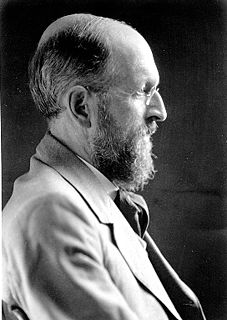
Theodore Dru Alison Cockerell (1866–1948) was an American zoologist, born at Norwood, England, and brother of Sydney Cockerell. He was educated at the Middlesex Hospital Medical School, and then studied botany in the field in Colorado in 1887–90. Subsequently, he became a taxonomist and published numerous papers on the Hymenoptera, Hemiptera, Mollusca and plants, as well as publications on paleontology and evolution.

The pygmy long-eared bat is a vespertilionid bat, found in the north of the Australian continent. An insectivorous flying hunter, they are one of the tiniest mammals in Australia, weighing only a few grams and one or two inches long.

The white-streaked honeyeater is a species of bird in the family Meliphagidae. It is monotypic within the genus Trichodere. It is endemic to Cape York Peninsula. Its natural habitat is subtropical or tropical dry forest.

The lesser tube-nosed bat is a species of megabat in the family Pteropodidae. It is native to two of the Maluku Islands in northern Indonesia.
Samarendra Nath Maulik was an Indian entomologist who worked at the Natural History Museum, London and specialized in the systematics of the leaf beetles. He worked briefly at the University of Calcutta as a professor of Zoology. A structure on the hind femur, particularly of flea beetles, and used in their leaping motion has sometimes been called as "Maulik's organ".
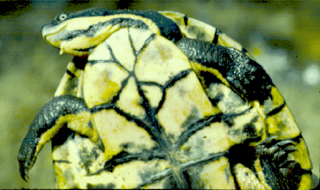
The Myuchelys is a genus of turtles, the Australian saw-shelled turtles, in the family Chelidae and subfamily Chelodininae. They inhabit the headwaters and tributaries of rivers within their range and this led to the name Myuchelys, which is formed from the Aboriginal word myuna meaning clear water and the Greek chelys meaning turtle. They have a short neck and the intergular scute completely separates the gular scutes. They have no alveolar ridge separating them from the snapping turtles of the genus Elseya.
Matthew William Kemble Connolly was a British army officer and malacologist.
Louis Beethoven Prout (1864–1943) was an English entomologist and musicologist.
Synanthedon flavipectus is a moth of the family Sesiidae. It is known from Ghana.
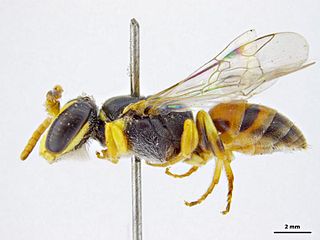
Hylaeus sanguinipictus is a bee species endemic to Western Australia. It was described in 1914 from material collected in Yallingup by Theodore Dru Alison Cockerell as Prosopis sanguinipicta.
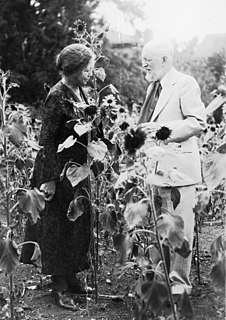
Wilmatte Porter Cockerell was an American entomologist and high school biology teacher who discovered and collected a large number of insect specimens and other organisms. She participated in numerous research and collecting field trips including the Cockerell-Mackie-Ogilvie expedition. She wrote several scientific articles in her own right, co-authored more with her husband, Theodore Dru Alison Cockerell, and assisted him with his prolific scientific output. She discovered and cultivated red sunflowers, eventually selling the seeds to commercial seed companies. Her husband and her entomological colleagues named a number of taxa in her honor.
Nyctophilus daedalus is a species of bat in the family Vespertilionidae, a flying mammal endemic to northern Australia. They are also referred to as the pallid long-eared bat or northern long-eared bat.

Hylaeus agilis, commonly known as the Agile masked bee, is a bee species in the family Colletidae. It is endemic to New Zealand. This species is found throughout the country and visits the flowers of a wide variety of plant species, both native and introduced.

Homalictus is a subgenus of bees in the genus Lasioglossum subfamily Halictinae of the family Halictidae. They are found in Sri Lanka, Southeast Asia, east across the Pacific to the Mariana Islands, Samoa, Fiji and are most prevalent in Australia.
A list of the species of Hymenoptera from New Zealand; currently listing the 'stinging wasps' (Aculeata), which includes ants, bees, and social wasps.
The Porter's miner bee is a species of miner bee in the family Andrenidae. It is found in North America. It was first described by Theodore Dru Alison Cockerell in 1900 and named after the collector of the type specimen Wilmatte Porter.

Bombus irisanensis is a rare species of bumblebee endemic to Luzon in the Philippines.

Hylaeus relegatus, also known as the Māori masked bee, is a bee species in the family Colletidae. It is endemic to New Zealand and was first described by Frederick Smith. It is the largest and most common species of this genus in that country. H. relegatus can be found throughout the three main islands of New Zealand and visits the flowers of a wide variety of plant species, both native and introduced. Although widespread, this species is not abundant at any one particular location. It has been hypothesised that human made nest sites can be used to increase its numbers.
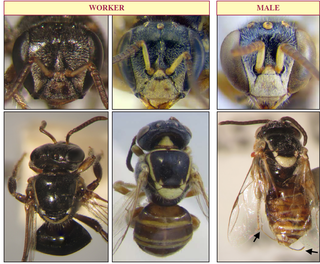
Austroplebeia essingtoni is a small eusocial stingless bee first described by Cockerell in 1905 and it is found in Australia. They are one of the smallest stingless bees in Australia and can survive in very arid areas with annual rainfalls down to 300 mm.














